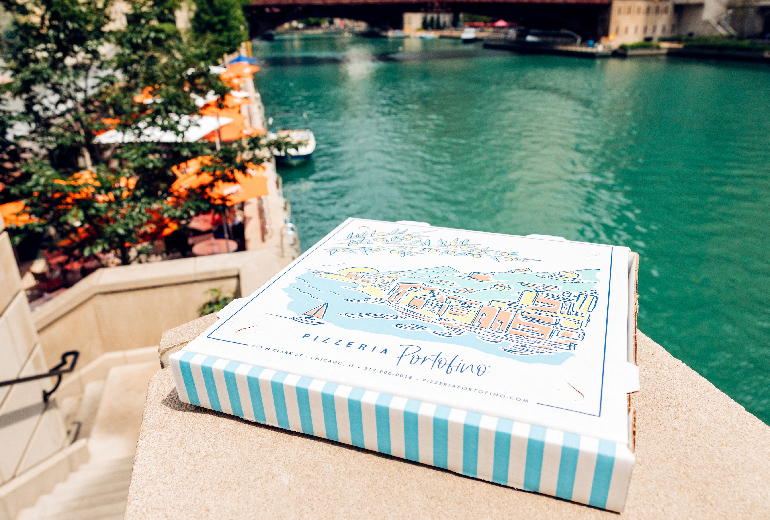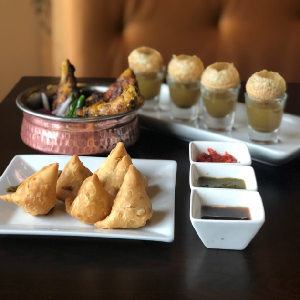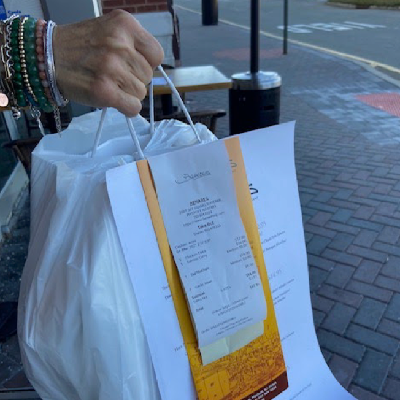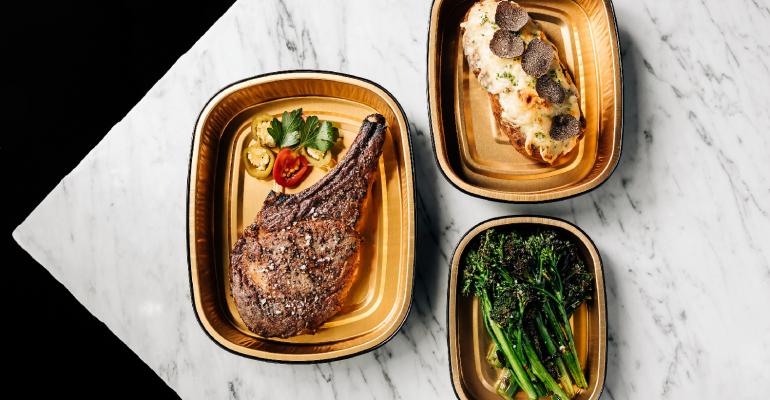Full-service restaurants have long been gathering places. They’re not just places to refuel, but places to reconnect — to share a meal or some drinks, sure, but also to share stories, to have moments of genuine face time rather than FaceTime.
But sometimes, particularly now after the onset of the pandemic, people don’t want to spend time in dining rooms. The convenience of off-premises dining has taken hold, and even as customers start to shed their masks and belly up to actual bars again, they continue to enjoy the convenience of more transactional, less emotional and less time-consuming meals that they can pick up or have delivered. And full-service operators that figured out how to compete with more traditional off-premises options during the pandemic now have entirely new revenue streams to capitalize on.
RPM Restaurants, a division of Lettuce Entertain You Enterprises in Chicago, already had robust catering programs at its restaurants — RPM Steak, RPM Seafood, RPM Itallian and Pizzeria Portofino — but the surge in demand for off-premises options as the pandemic struck meant the group had to improve its game.
“It’s how we survived for a couple of months,” until dining rooms reopened, managing partner Kelly Clancy said. “It gave us an opportunity to dial in our carryout and delivery and make it the best we possibly could.”
That included improving its packaging. Clancy and her team switched from plastic to recyclable aluminum containers that allowed customers to pop their deliveries directly into the oven for reheating. The group also improved its reheating instructions, she said.

At Pizzeria Portofino, the team added artwork to the pizza boxes, making them more memorable and keeping the restaurant top-of-mind for the next time customers wanted pizza.
“I think we made a huge impact, and guests were able to see what the restaurants could really do,” she said. “To this day a lot of the restaurants are still experiencing the largest carryout and delivery numbers that they've ever seen.”
Five-unit Osteria Morini, part of the New York City–based Altamarea group, also invested in new packaging as well as different approaches to preparing food, executive chef Kevin Knevals said.
Delivering the restaurants’ freshly made pasta posed a particular problem, he said, because the noodles continued to absorb liquid as they were delivered, meaning they sucked up all the sauce and arrived as a single block of food.
“Fresh pasta is just a sponge,” Knevals said.
The solution was sligtly less cooking time — fresh pasta cooks quickly, so he could only slow it down so much, he said — as well as deeper bowls with more sauce. The higher sauce-to-pasta ratio meant that the food was dellivered intact, he said.
 Benares Indian Restaurant in Wyckoff, N.J., had a lunch buffet before the pandemic, something the owners inherited when they took over the space from another Indian restaurant, said general manager Ranbir Bhatia. That was obviously a non-starter once the pandemic started, and it certainly doesn’t work for takeout and delivery. So the restaurant introduced a three-course prix-fixe menu of choice of soup, salad or appetizer; a main course with lentils and bread or rice; and a dessert, starting at $12.95 for a vegetarian meal, up to $19.95 for a tandoori mixed grill.
Benares Indian Restaurant in Wyckoff, N.J., had a lunch buffet before the pandemic, something the owners inherited when they took over the space from another Indian restaurant, said general manager Ranbir Bhatia. That was obviously a non-starter once the pandemic started, and it certainly doesn’t work for takeout and delivery. So the restaurant introduced a three-course prix-fixe menu of choice of soup, salad or appetizer; a main course with lentils and bread or rice; and a dessert, starting at $12.95 for a vegetarian meal, up to $19.95 for a tandoori mixed grill.
“This is a much better way of doing lunch than the buffet,” Bhatia said, noting that waste was very high at the buffet, and the pandemic gave him a reason to get rid of it.
 Meanwhile, to encourage takeout and delivery, the restaurant offered a 20% discount for off-premises orders early in the pandemic. Delivery had already been available, and the restaurant has its own staff of delivery people for orders placed through its website or via GrubHub.
Meanwhile, to encourage takeout and delivery, the restaurant offered a 20% discount for off-premises orders early in the pandemic. Delivery had already been available, and the restaurant has its own staff of delivery people for orders placed through its website or via GrubHub.
Bhatia said that before the pandemic, in-house dining was around 70% of the business, but now it’s about half.
“We have still maintained the clientele who were ordering food to go or for delivery,” he said.
But the 20% discount has been replaced by a 10% discount to customers who order via their website instead of through third-party delivery services. “The customers have an incentive, and we don’t have to pay 20%–30% fees to third parties,” Bhatia said.
Contact Bret Thorn at [email protected]
Follow him on Twitter: @foodwriterdiary





